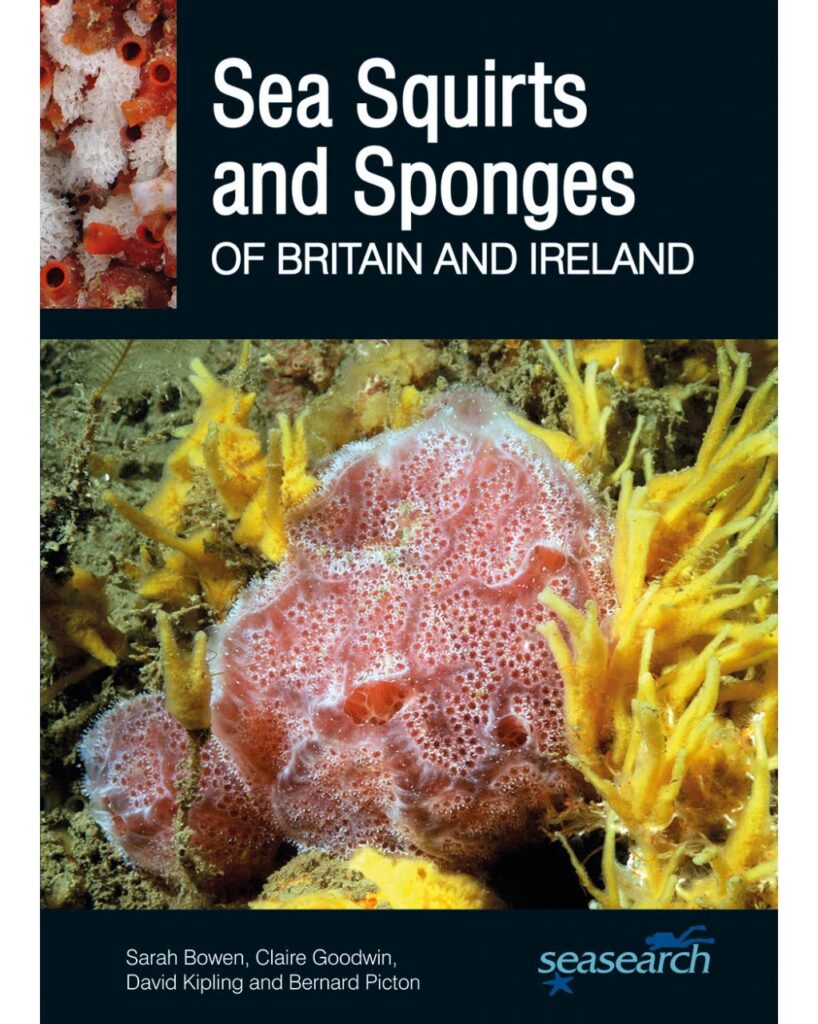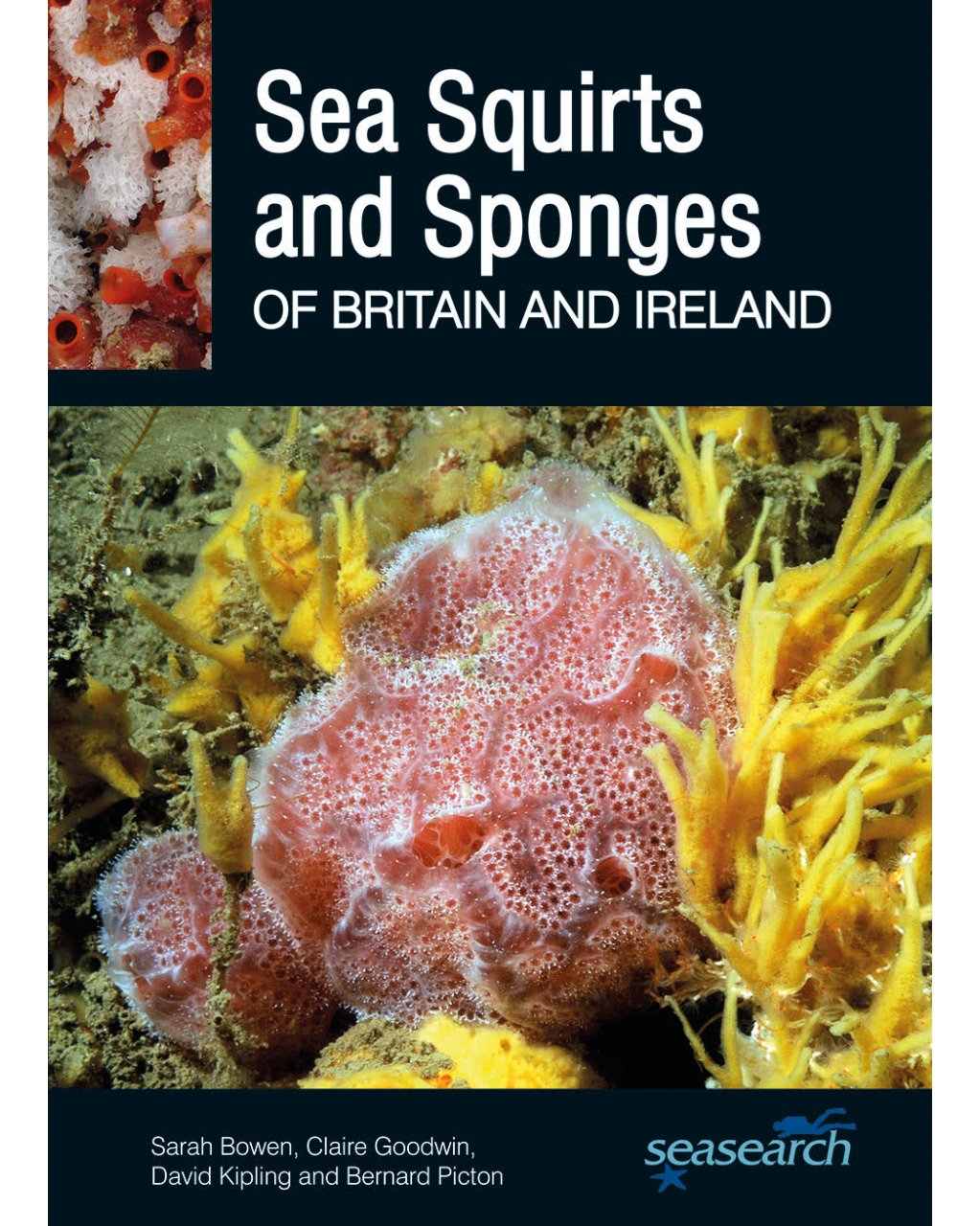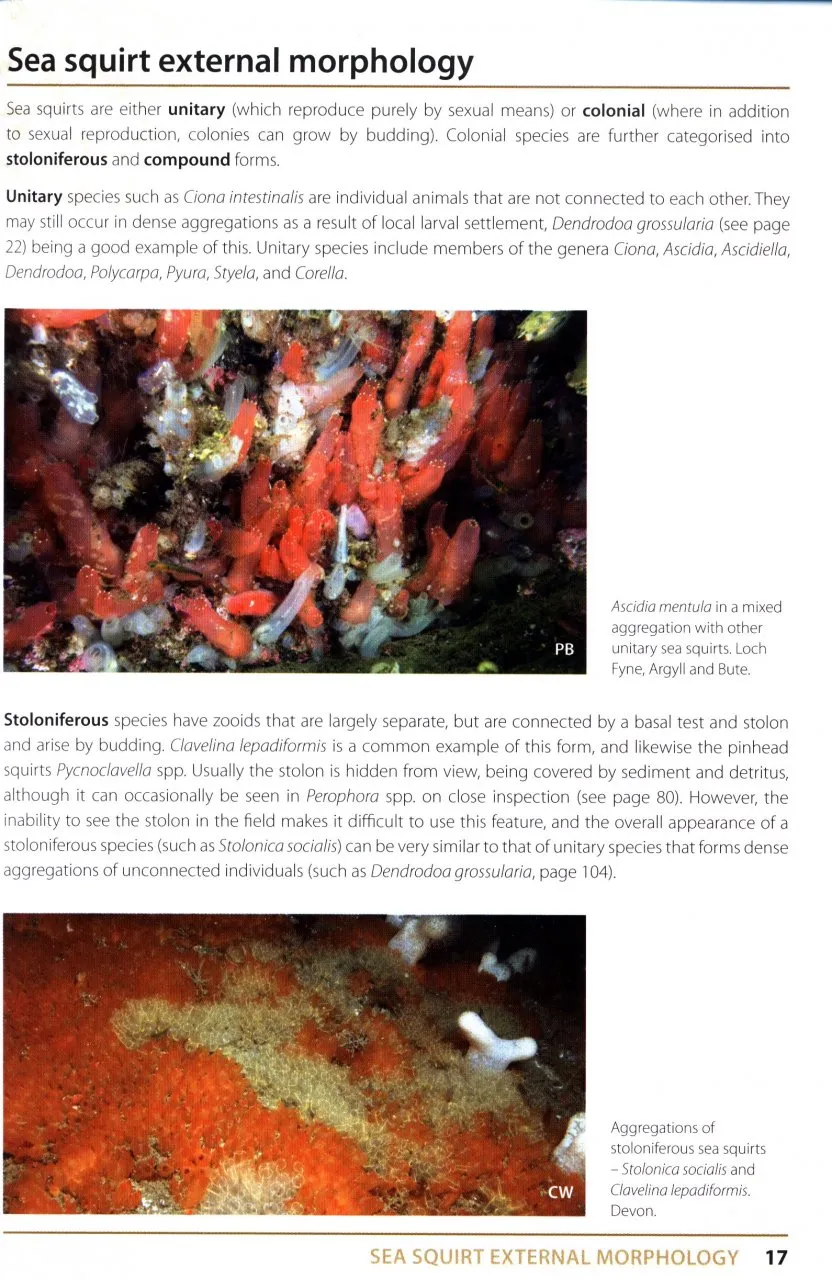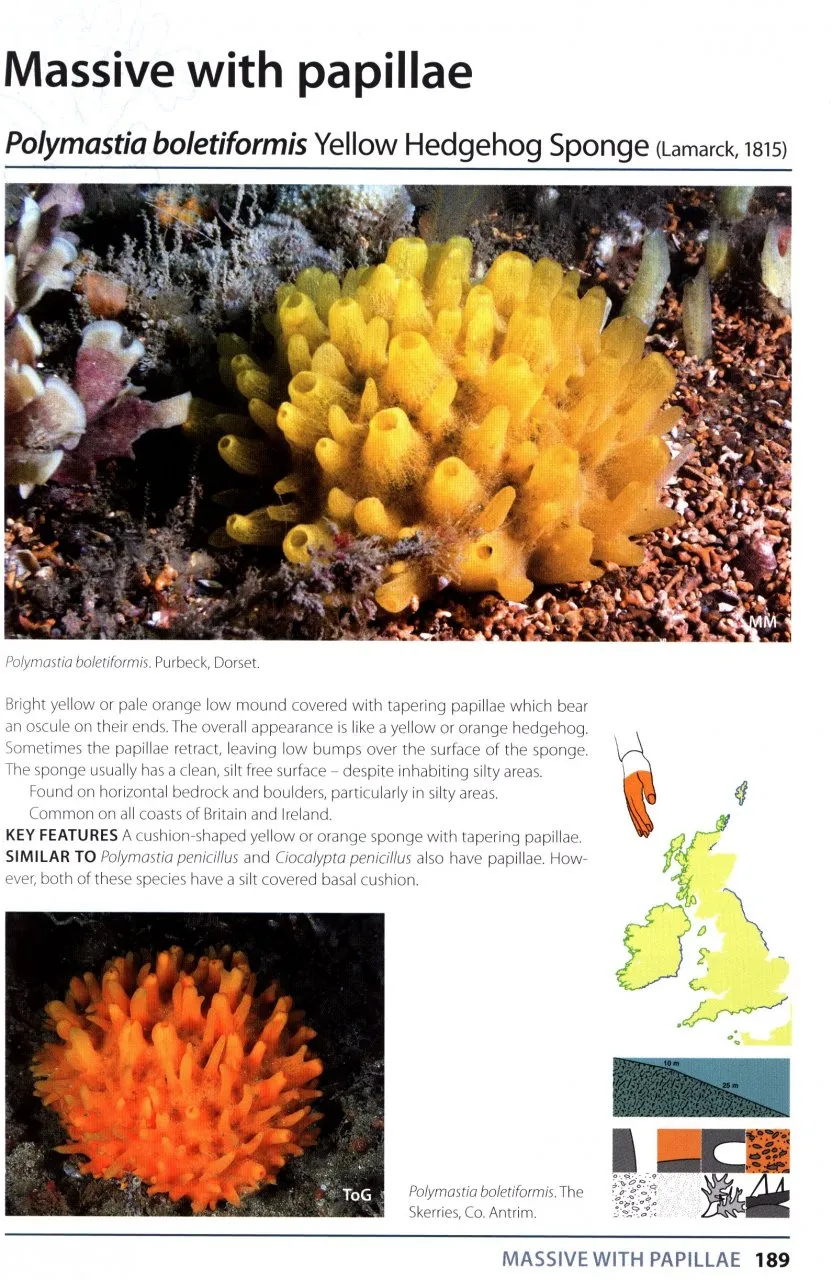This admirably illustrated handbook is an addition to the growing library of Seasearch field guides to the marine life of Britain and Ireland. One reason for bringing together sea squirts and sponges – two phyla from opposite extremes of the evolutionary spectrum – in one volume is the difficulty that non-specialists may experience when attempting to separate the two groups. The emphasis is on field identification based on external characters; readers will not find the classical descriptions, which traditionally include detailed dissections of internal anatomy for sea squirts, and thin sections and spicule drawings for sponges. Excellent field photographs show the animals in their natural habitats, with the details referred to in the text clearly visible in the accompanying images. This approach necessarily has limitations: users are encouraged, for example, to record most thin sponge crusts as ‘encrusting sponges’ and many small sea squirts can be classified only in broad groups such as ‘sandy polyclinids’ or ‘molgulids’. To date, the problem for many taxa has been that of associating good in-situ photographs with accurate identification based on the traditional methods used by taxonomists. The task has become easier thanks to the proliferation of affordable underwater digital photographic equipment, and through the dedication and extensive field experience of the four authors the results of these two approaches have been carefully correlated in order to allow reliable field identification, where possible. In the case of the sea squirts, several widely recorded taxa with distinctive field characters have been included despite not being assigned a specific name.
View this book on the NHBS website
The sections for each group start with an introduction to classification and biology, the group’s predators and the crucial role that these species can play within marine communities, where they may be a dominant component of the fauna. Sea squirts are presented in taxonomic order, while sponges have been grouped by growth form (as is done commonly during commercial, remote-photography-based surveys of sponge diversity). Each species account includes a detailed description, which highlights the key features and refers the reader to other taxa that might cause confusion. A series of icons indicates a species’ size, habitat and typical depth range. English names are given where these are in common usage, but new names have not been created to fill the gaps.
Non-native sea squirts, some of which are now causing serious problems in marinas and for aquaculture, are clearly indicated, while non-native sponges have not yet been reported from the area covered by this book.
At present, neither group is widely recorded by non-experts and often there are few details available on distribution, as reflected by the lack of maps for sea squirts. Many taxa of both groups are under-recorded by divers and by those who explore the intertidal zone too, so this guide should help to encourage the greater reporting of sea squirts and sponges. The book has certainly helped me to solve a few conundrums during my Seasearch recording in Dorset.




